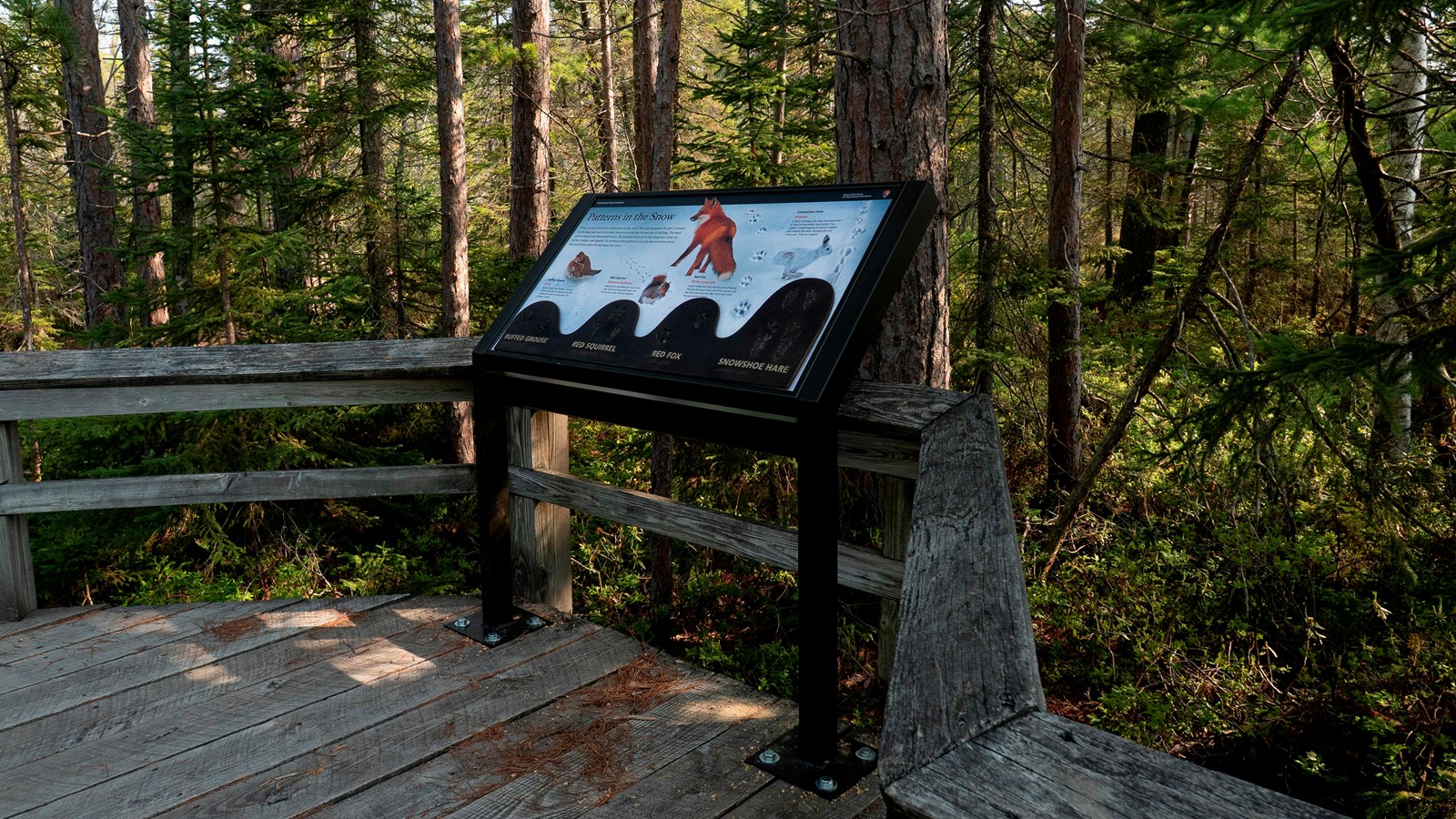Last updated: June 28, 2025
Place
Patterns in the Snow Exhibit

Patterns in the Snow
What can you tell from an animal track in the snow? You may recognize the type of animal by the shape and size of the track, but every animal has its own way of walking. The track pattern shows how that animal moves. The animals below are in the categories of pacers, perfect walkers, and hoppers. By looking at these patterns, you can discover more about the animal that walked by and made that track.Ruffed Grouse
The Ojibwe word for Ruffed Grouse is “Bine.”
Grouse tracks often wander in and out of shrub thickets, showing how the bird wandered in search of tasty buds. The grouse is a pacer.
Red Squirrel
The Ojibwe word for Red Squirrel is “Miskwaa Ajidamoo.”
Red squirrels find safety and food in the trees, so their prints usually begin and end at tree trunks. They are hoppers.
Red Fox
The Ojibwe word for Red Fox is “Misko-wagoosh.”
Small, nimble feet help the fox move efficiently through the snow. Foxes, and other canines, will step their hind feet into their front foot tracks. They are perfect walkers.
Snowshoe Hare
The Ojibwe word for Snowshoe Hare is “Wabooz.”
In hare trackways, the large hind prints fall in front of the smaller front prints. This pattern of leapfrogging is found in rabbits and rodents like mice, red squirrels, and chipmunks. They are hoppers.
